One of the criteria for choosing a kitchen hood is its size. They are different, but since they are standardized, it will not be difficult to choose the right model, especially if you are assisted by a competent sales assistant. And yet, some rules and nuances are better to know before making a purchase.

Dome width = slab width?
Width is the first thing you need to pay attention to when choosing the size of the hood, since it is this that significantly affects the efficiency of collecting particles of fat, odors, and fumes. What dimensions should be the hood over the stove, so that even when working in a weak mode, which means that with less energy consumption, wear and noise, it was still effective?
- Focus on the rule: the hood should be equal to the plate, and ideally - wider. If the width of the hood will be less than the cooking surface, or it will not be located above the stove, but slightly shifted, the quality of air purification will noticeably decrease;
- If you have not chosen a slab yet, then you need to be guided by the distance between the wall cabinets or the dimensions of the wall module in which the built-in hood will be installed. If space allows, choose an exhaust hood of 60, 80 or 90 cm.
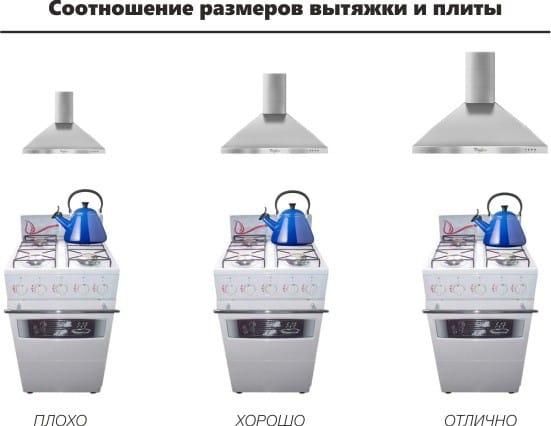
Kitchen hoods have the following size range: 30 cm, 45 cm, 50 cm, 60 cm, 80 cm, 90 cm, 100 cm and 120 cm in width. It is logical that the size range of the stove or the built-in hob is about the same. The most running width of the dome is 60 and 90 cm, since in this size they are best suited for a standard cooker with four burners. But overall hoods with an umbrella of 100 and 120 cm will need to be searched, since the demand for them is small, because these are more likely not professional kitchen models.
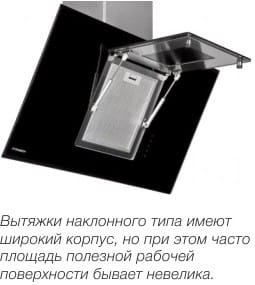
You need to focus on the size of the working exhaust surface, and not on the size of the hood hood. It often happens that the dome itself is wide, but the working exhaust surface is small. An example of such a hood on the right.
The embedded model, in this case, will be more practical due to the sliding element, which increases the area of capture.

And on the following photos you can see what sizes the built-in hood can be, on the left - a 30 cm wide model.
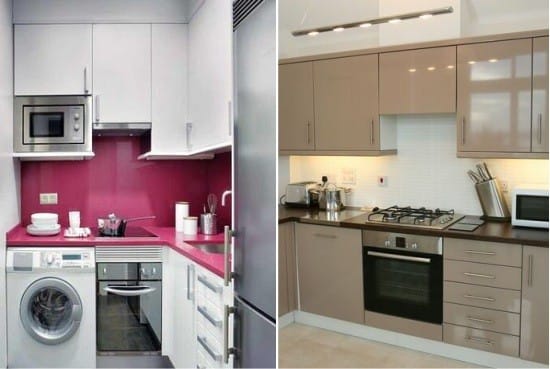
Depth dome and embedded model
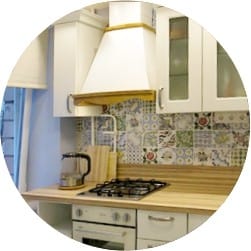
The depth of the hood is as important as its width, because, as has already been noted, the larger the area of the working pull-in surface, the more efficient the cleaning of kitchen air. The standard depth parameters correspond to the typical width options: 30, 45, 50, 60, 80, 90, 100, 120 cm. The depth of the worktop must be equal to or greater than the depth of the stove or the built-in hob. The dome may be greater than the depth of the mounted modules, but not more than the depth of the tabletop.
But the depth of the hood for embedding is adjustable, but its body, of course, must match the depth of the kitchen wall cabinets, as shown in the photo below.
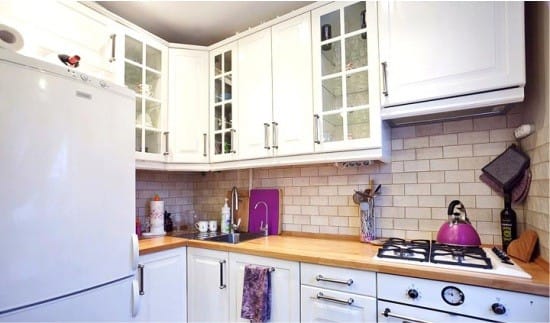
What should be the height?
Hoods for the kitchen are different and height. The maximum height of the dome model is 125 cm.
The photo below shows examples of devices of different heights (scroll to the right).
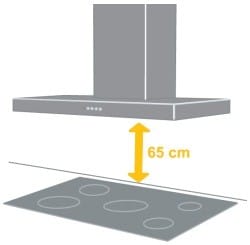
The height of the appliance is necessarily selected depending on the overall height of the room and the height of the kitchen unit. Safety regulations regulate the minimum distance between the exhaust surface and the stove. As a rule, this value is 65-75 cm. Reducing this value is fraught with ignition and damage to equipment due to constant high temperatures. Built-in or dome hood must be located at a distance of more than 65 cm from electric stoves, and for gas stoves this value is 75 cm.
Installation Features
The choice of the installation site is directly influenced by the structural features of the model you like. Wall or ceiling structures are not hidden by the cabinets and are installed exactly above the stove, while special air ducts are often used for the duct. But the model for embedding will require the manufacture of appropriate furniture.
Please note that to install the hood will need pipes, sockets and electrical cable, boxes, mounting accessories and fasteners. Not to do without an air duct - it can be corrugated pipes or a smooth-wall sleeve.

Corrugated pipes are distinguished by the fact that they can be bent at any angle.
Keep in mind that duct bending above 90 degrees is not allowed.
Do not forget that there are special boxes that allow you to hide the air duct, integrate communications into any kitchen design.
The diameter of the duct depends on how the outlet is made in the house, and the length of the pipe is determined depending on the distance from the device, from the opening in the wall or from the ventilation shaft.
If we are talking about installing a built-in hood, then everything must be done in accordance with the installation instructions. The main criteria for mounting the device for embedding are:
- The device's pull-out panel is always visible;
- The outlet is always connected to the vent shaft.
If there is no possibility of such a connection or it is impossible to lay the exhaust pipes, you can install a recirculation model - among them there are also options designed for embedding.
- Hood in the kitchen - what you need to pay attention to when buying
- We repair kitchen hood by yourself
- Installing the hood and duct do it yourself
- Kitchen Hood Filters - Rules for Choosing and Replacing
- We clean the hood from fat - quickly, simply, efficiently
- How to choose built-in appliances for the kitchen

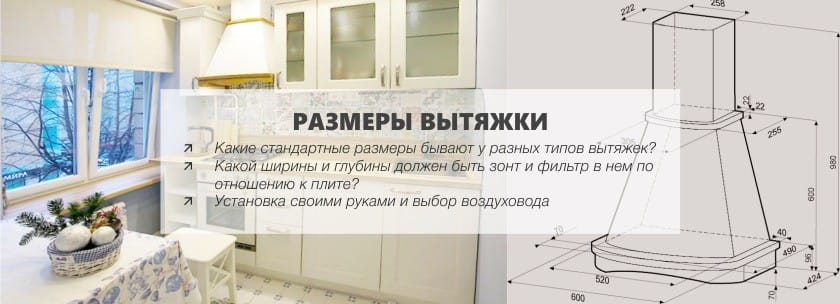
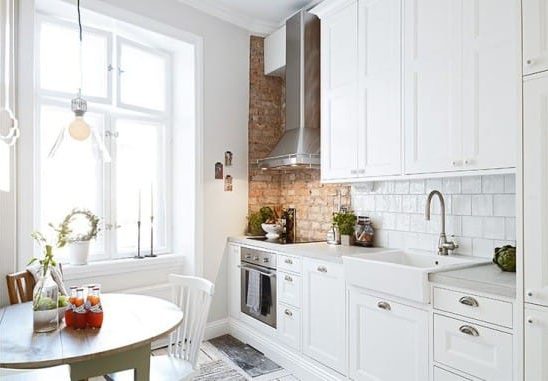
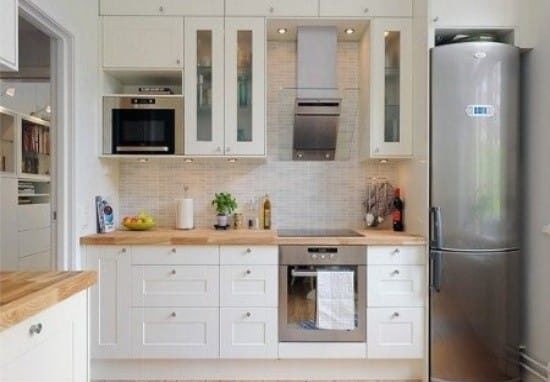
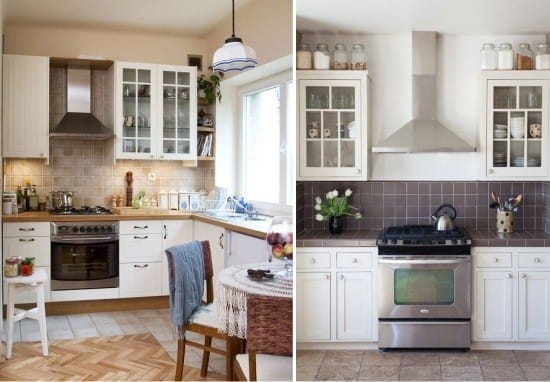

 (Rate the material! Already voted:40 average rating: 4,63 from 5)
(Rate the material! Already voted:40 average rating: 4,63 from 5)
Thanks for the useful information. My hood, as it turned out, was set higher than necessary, the depth did not cover the entire hob, since the stove was pushed to the level of kitchen cabinets. The effect of the hood was almost not observed. Now we take into account all the nuances.
Natali, come again)
My husband and I had a little oddity with a hood in the kitchen, probably the main reason is that we did not calculate all the proportions correctly. It seems to fit the size of the gas stove, and the company is not bad, but does not give a strong effect. Very upset.
hmm, but what about power! size does matter, but not so much, the mother has a hood ... .. does not pull, but the size is chosen, all the fat on it ... ..))
Where is interesting to find a built-in hood 30cm in St. Petersburg?
the hood picked up the size of the hob, and then she bought Hotpoint-Ariston, the Italians understand this, they have ovens, that the hoods, that the panels are always praised, are optimal in price and quality
It seems to me that oblique hoods cover more around the perimeter, I bought one myself from a hotpoint, I am very pleased, I support everyone who wrote that the quality is excellent, I confirm!
Hood most importantly, to be like or a little more than the cooking surface.We therefore chose one firm, hotpoint, and have already taken from them both the oven, and the hob, and the hood. There it is also important that it fits the size of the kitchen, if you have a 3x3 kitchen, so there you need a small extractor
Thanks for the helpful article! so often make a mistake in this, and then they write that the hood does not melt)) I also like the fireplace hood Indesit, so they took it for themselves. although their hoods are generally praised, the mantel simply superficially pleased us. Well, the parameters fit, of course)